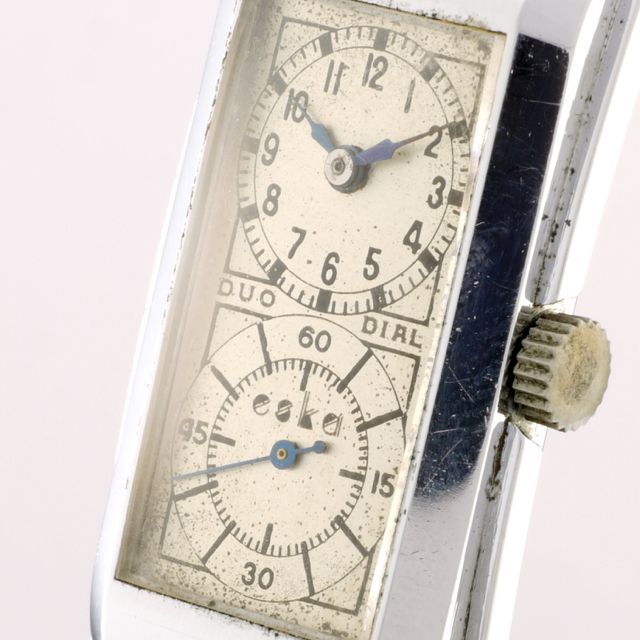
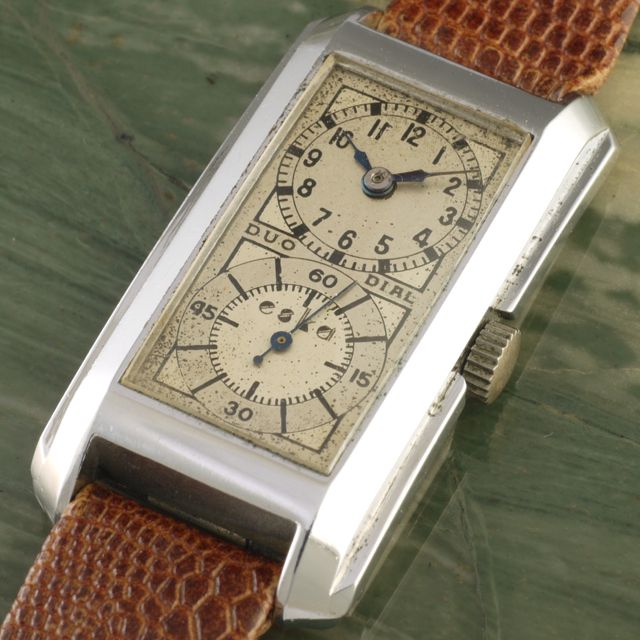
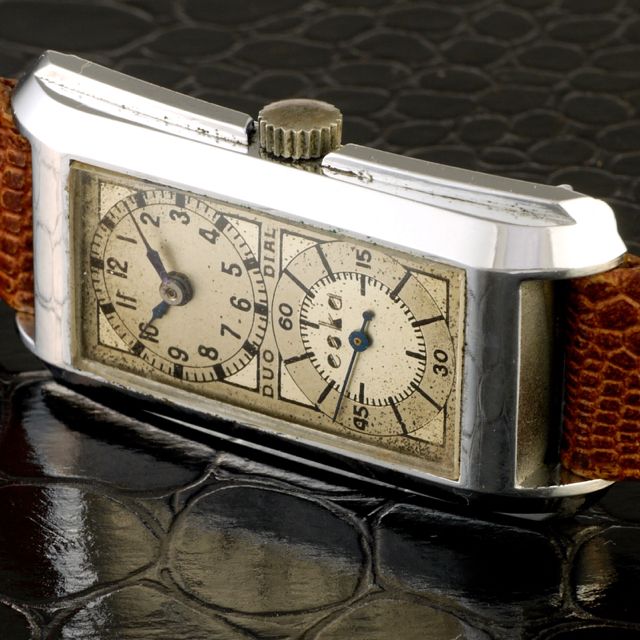
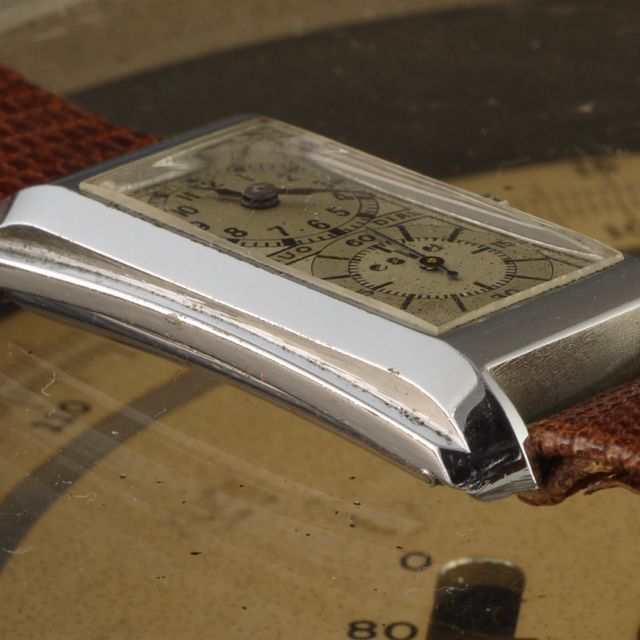
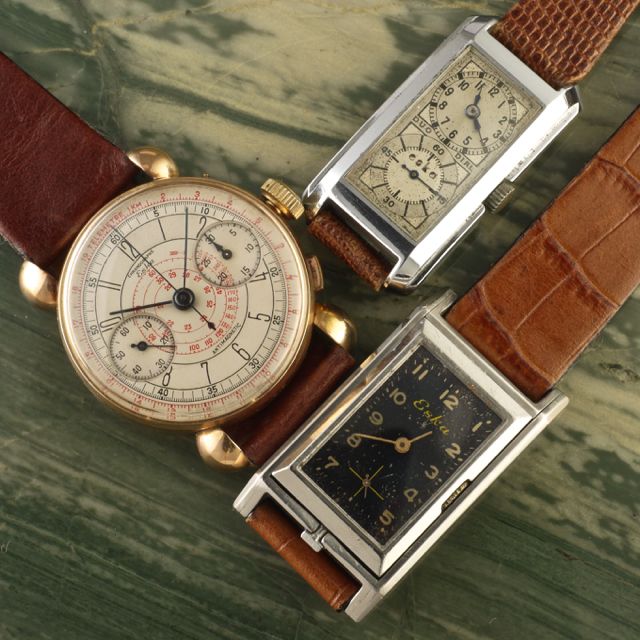
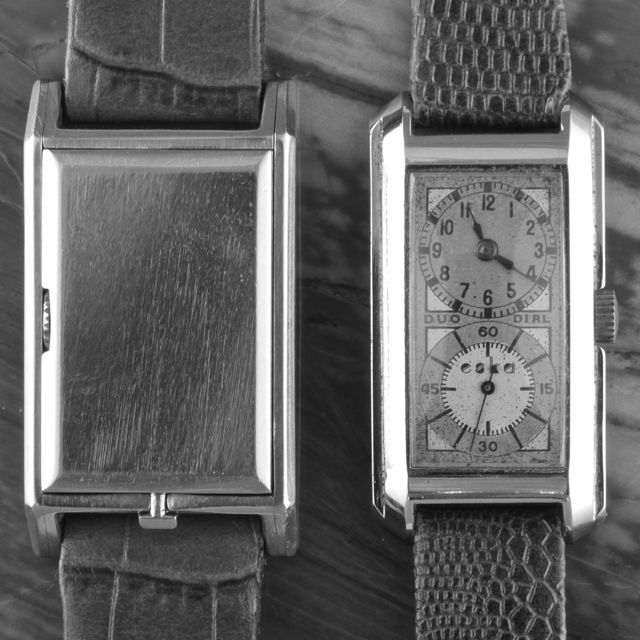
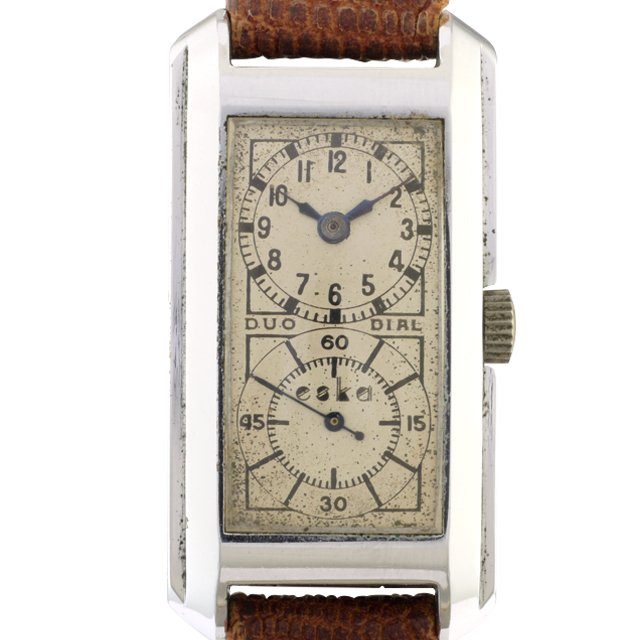
Eska Duo dial
Al Capone was at the climax of his power1926 Eska art Deco Duo dial.
Since the mechanical movements were mostly round miniature pocket watch movements, this movement shape dictated the case design. Form follows function was the mantra of the Art Deco era in the 1920s. However, innovators like Eska, began to design and engineer rectangular shaped mechanical movements.
Eska was one of the smallest watch brands in Swiss. After the end of World War I, many watch manufacturers appeared in Europe and Sylvan Kocher & Cie. was of them. The name Eska is the phonetic spelling in French of the letter s and k (es-ka). The wristwatches of the brand included manual and automatic models, besides models with full calendars and digital time displays.
The concept of the wristwatch goes back to the early 16th century when Elizabeth I of England received a wristwatch from Robert Dudley in 1571.
Wristlets, as they were called, were reserved for women. Men considered that wristwatches were too small to be properly engineered in order to keep time accurately.
This all started to change in the nineteenth century wars, when early models were essentially standard pocket-watches fitted to a leather strap. By the early 20th century manufacturers began producing purpose-built wristwatches. The Swiss company, Dimier Frres & Cie patented a wristwatch design with the now standard wire lugs in 1903.
After the WWI was over, thousands of veterans were demobilized and went back to civilian life wearing the wristwatch that had served them faithfully. Seeing these battle hardened veterans wearing their wristwatches changed the public perception that wearing a wristwatch was not manly, and sales of the men wristwatches take off.
